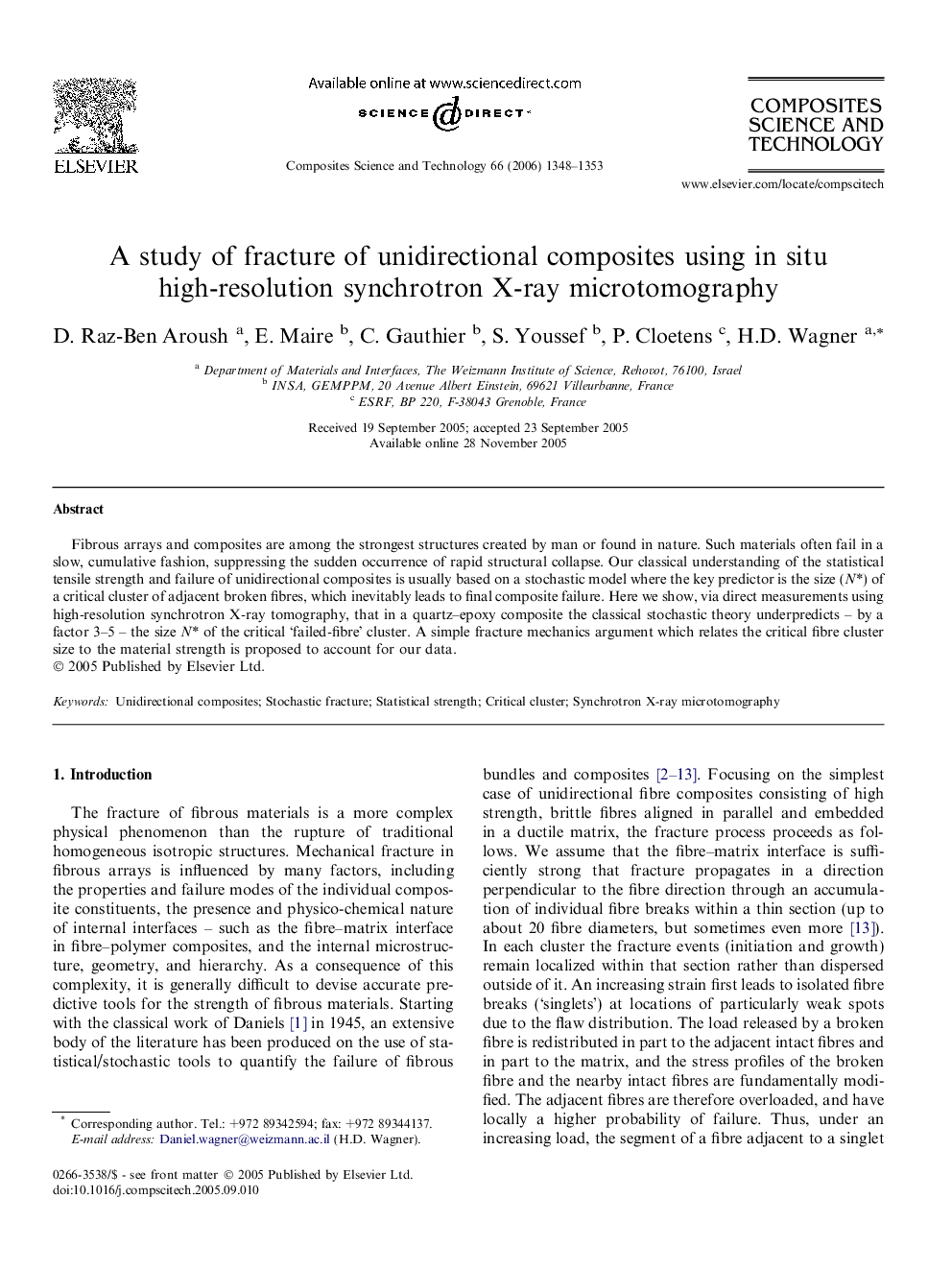| Article ID | Journal | Published Year | Pages | File Type |
|---|---|---|---|---|
| 822948 | Composites Science and Technology | 2006 | 6 Pages |
Fibrous arrays and composites are among the strongest structures created by man or found in nature. Such materials often fail in a slow, cumulative fashion, suppressing the sudden occurrence of rapid structural collapse. Our classical understanding of the statistical tensile strength and failure of unidirectional composites is usually based on a stochastic model where the key predictor is the size (N*) of a critical cluster of adjacent broken fibres, which inevitably leads to final composite failure. Here we show, via direct measurements using high-resolution synchrotron X-ray tomography, that in a quartz–epoxy composite the classical stochastic theory underpredicts – by a factor 3–5 – the size N* of the critical ‘failed-fibre’ cluster. A simple fracture mechanics argument which relates the critical fibre cluster size to the material strength is proposed to account for our data.
